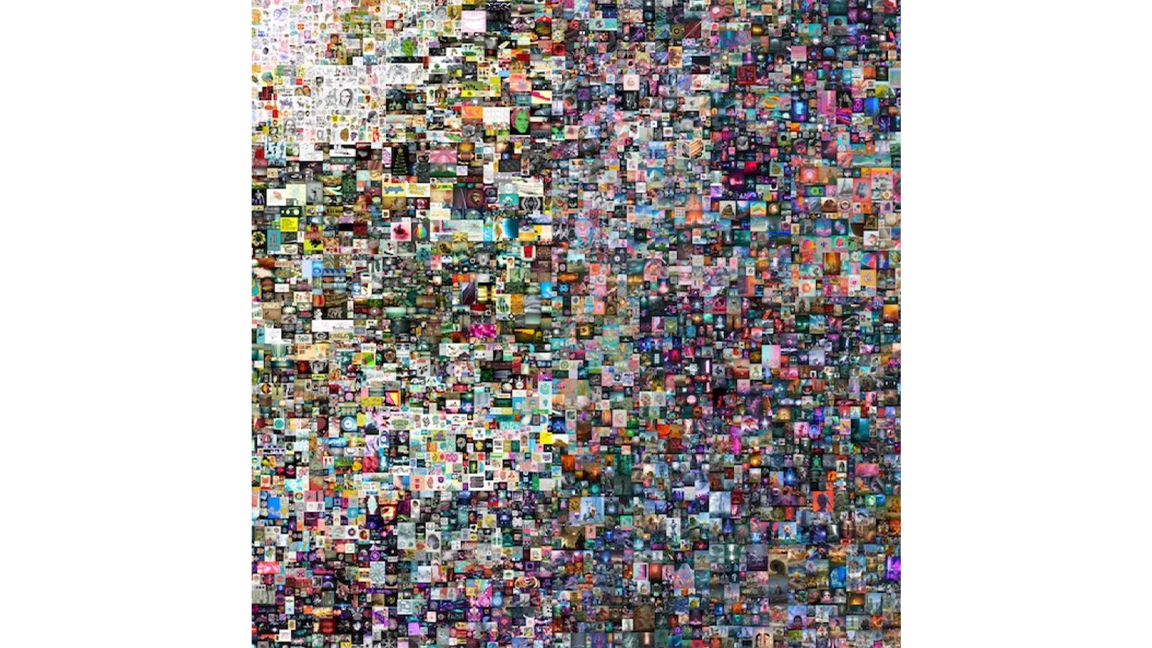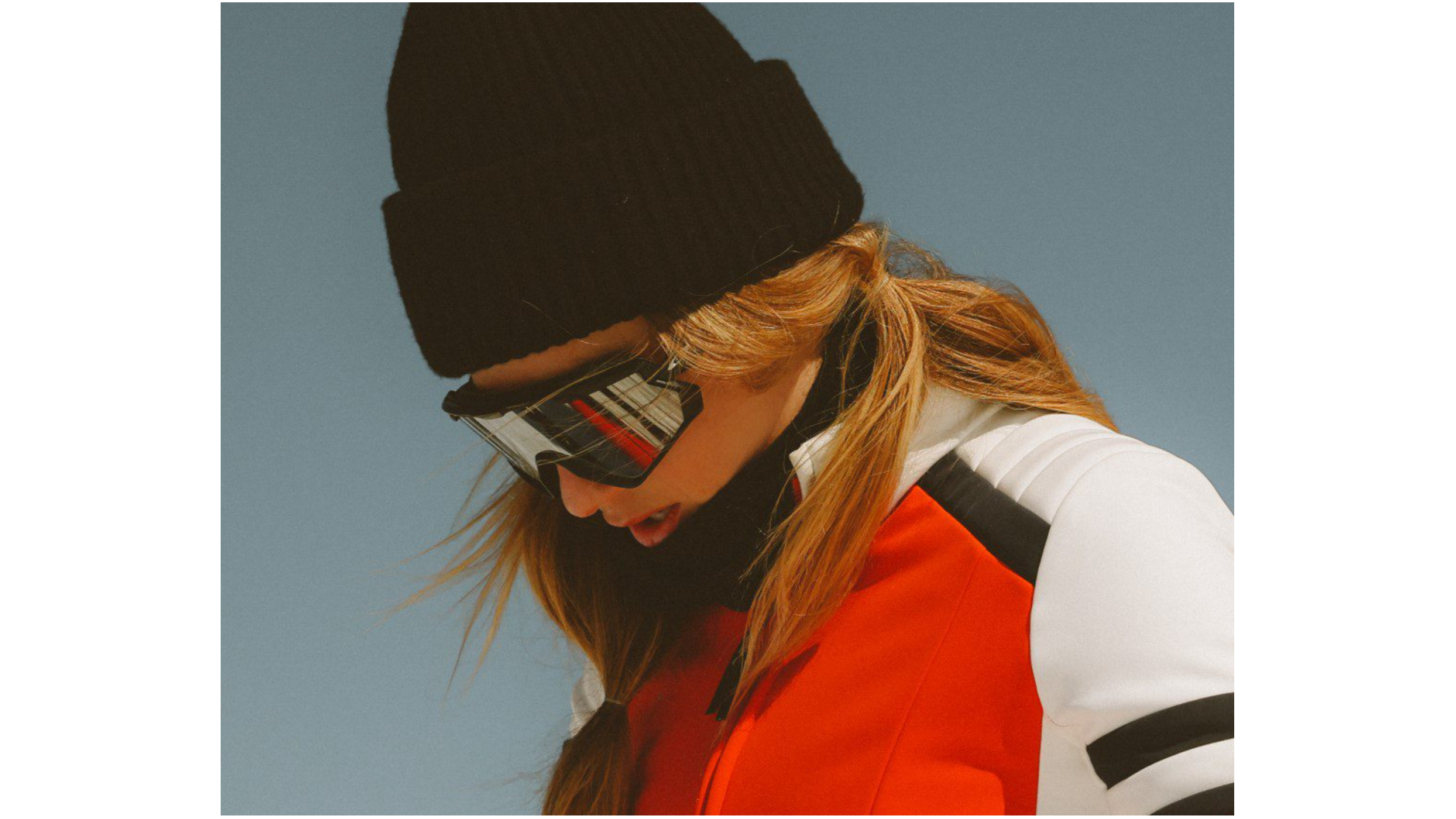
Remember NFTs? Back in 2021, they were the very future of art, with high profile NFT artworks fetching eye-watering prices at auction. And then it ended. The close connection between NFTs and cryptocurrencies turned out to be weakness in the market, and the collapse in the price of bitcoin and ether in 2022 was a big blow to the market.
However, while it might not be making as much news these days the NFT art market still exists, and it's been seeing something of a resurgence. In fact, the digital fine art marketplace Exchange.art says its sales were up by 1000% in December 2023. We caught up with curator Larisa Barbu, the platform's CEO, to learn what's change and how she expects the digital art market to evolve.
Are NFTs back?

"The reality is that NFTs have remained a constant presence. The NFT industry has faced challenges akin to those experienced by the broader economy, influenced by macroeconomic factors like inflation and market sentiment. Notably, key indicators on Exchange Art from 2022 to 2023 reveal significant growth: total transactions, including mints, bids, and offers, rose by around 35%, the number of wallet collectors increased by approximately 29%, and NFT listings surged by an impressive 960%.
"This indicates a shift in sentiment, with people becoming more optimistic, particularly amidst the upward trajectory of cryptocurrency prices. This optimism is palpable in the NFT realm as well. In December, Exchange.art recorded a 1000% surge in sales compared to previous months, underscoring the growing interest in the NFT space."
What lessons were learned from the NFT downturn?
"The NFT sector is characterized by its volatility, presenting significant challenges for businesses operating within it. Despite enduring its most challenging period yet, NFTs have not only survived but also flourished, showcasing their resilience. Community plays a crucial role in the NFT market, providing essential support during downturns, guiding it toward its present success, and highlighting its resilience and promising future."
Was it a good thing that the NFT bubble burst?

"The 'NFT Bubble burst' was a double-edged sword: while it garnered widespread attention from the mass media towards this technology, it also generated negative publicity, exemplifying its dual impact. One challenge arising from this is the tarnishing of the reputation of a technology that otherwise offers significant benefits for artists and collectors, such as immutability and provenance, which are particularly advantageous in the art world.
"Nevertheless, despite the public scrutiny and reputational damage, technology enthusiasts, art aficionados, and artists have persisted in advancing and innovating within the NFT space. This includes visual artists, creative coders, and developers who are introducing new tools to serve this evolving industry.
"In the art sphere, we anticipate ongoing experimentation with NFTs, with a shift towards emphasizing genuine artistic value and cultural significance over speculative hype. As the technology matures, artists and creators may discover novel ways to utilize NFTs for authentication, royalties, and delivering unique experiences to their audience. I eagerly anticipate witnessing the developments that the next bull run will bring to this space."
Are we now seeing NFT digital art with more purpose and artistic value?
"Both the art and NFT markets are still in the process of recovering and rebounding fully. However, the current growth and success can be attributed to the dedicated community of creators, collectors, and platforms.
"Many of the artworks that are performing strongly appear to have been crafted with greater care, investment of time, and creative energy. It's noticeable that creators who have experienced a slowdown in sales have utilized this period wisely by focusing on developing more thoughtful concepts and enhancing their skills and techniques. This demonstrates their adaptability and commitment to continuous improvement."
The convergence of traditional and digital art is a prominent theme at the moment. What opportunities does it present for artists and collectors?

"The convergence of digital platforms and the art world is a compelling phenomenon, offering artists autonomy over their creative process and global exposure while retaining 100% of their earnings, facilitated by platforms like Exchange.art which charge no commission fees. Plans are in place to introduce e-commerce and trading functionalities for traditional artists, expanding their reach into the digital market.
"Additionally, features enabling the trading of physical artworks aim to attract traditional collectors to the digital space. For collectors, benefits include access to detailed provenance information and opportunities to build relationships with artists. understanding details such as the wallet that minted it, ownership history, and artist involvement provides comprehensive insight into the token's journey."
In what ways will Web3 technology reshape the art industry, and who will benefit?
"The key benefit of Web3 lies in its emphasis on provenance, a feature that traditional art is gradually adopting. This can be reinforced through the utilization of NFT or similar technology, linking the physical artwork with its digital counterpart. This integration provides advantages to all stakeholders: collectors acquire the authentic piece, artists gain confidence in their work's authenticity, individuals can readily spot counterfeit art, and art galleries and curators maintain their reputations by verifying the authenticity of the artworks they handle."
With the rise of NFTs, some argue that the art world is becoming more democratized. How do you make art more accessible while maintaining the exclusivity associated with traditional art?

"At Exchange.Art we don’t gatekeep: It's an open platform where artists can easily sell their artwork without pricing restrictions or commission fees. Powered by Solana, our highly accessible technology ensures cost-effective transactions for artists. There are ways to maintain the exclusivity as well - for example: one of the tools that artists are using: when selling their edition - the equivalent of a print in the real world - they can run a presale, where only specific people are allowed to buy a piece.
"The entry of institutions from the traditional art world into the digital art space signifies a significant shift, exemplified by the participation of renowned brand designers like Alessandro Fiori from Ferrari or the renowned photographer Michael Woolery, with his ALTA collection on Exchange.Art, showcasing the growing legitimacy and allure of digital art among established entities. Ultimately, as long as we identify a reasonable level of demand for a particular feature, we’ll build it."
The digital art market is evolving rapidly. How do you stay ahead of trends and technologies to provide innovative solutions for both artists and collectors?

"We are really listening to the community, dedicating significant time to speaking to artists and collectors, and figuring out their needs. By understanding their needs and vision for the future,we stay ahead of market trends and anticipate our audience’s needs in every step of the way."
How do you see traditional and digital artists working together in the future?
"Regarding digital art, our platform can incorporate collaborative features, such as enabling artists to share primary sales and royalties when working together on a piece, which is entirely feasible. Looking ahead, we plan to introduce curation tools that facilitate collaboration between artists and curators.
"In the realm of both digital and physical art, many artists engage in both mediums, leading to natural collaborations similar to those in the real world. With some artists focusing on physical creations and others on digital, creative collaborations are bound to emerge organically."
How will AI affect NFTs and Web3 art?
"It is always challenging to anticipate how such breakthrough technology will affect a certain industry, but by leveraging blockchain technology you are able to trace provenance – pretty much the most important aspect in our case – since this is public data, can check if a wallet belongs to an artist or not, whether that NFT has been minted by that artist or not.
"All in all, NFTs and blockchain will be able to assist with this. This being said, I don’t believe that AI generators will be taking over the world, and so forth –I truly believe that the connections between people always prevail. Forgeries, etc, on social media, and on blockchain will be easily spotted."
To get up to speed on NFTs if you missed the first boom, see our pieces on what are NFTs? and how to make and sell an NFT.



!["[T]he First and Fifth Amendments Require ICE to Provide Information About the Whereabouts of a Detained Person"](https://images.inkl.com/s3/publisher/cover/212/reason-cover.png?w=600)



